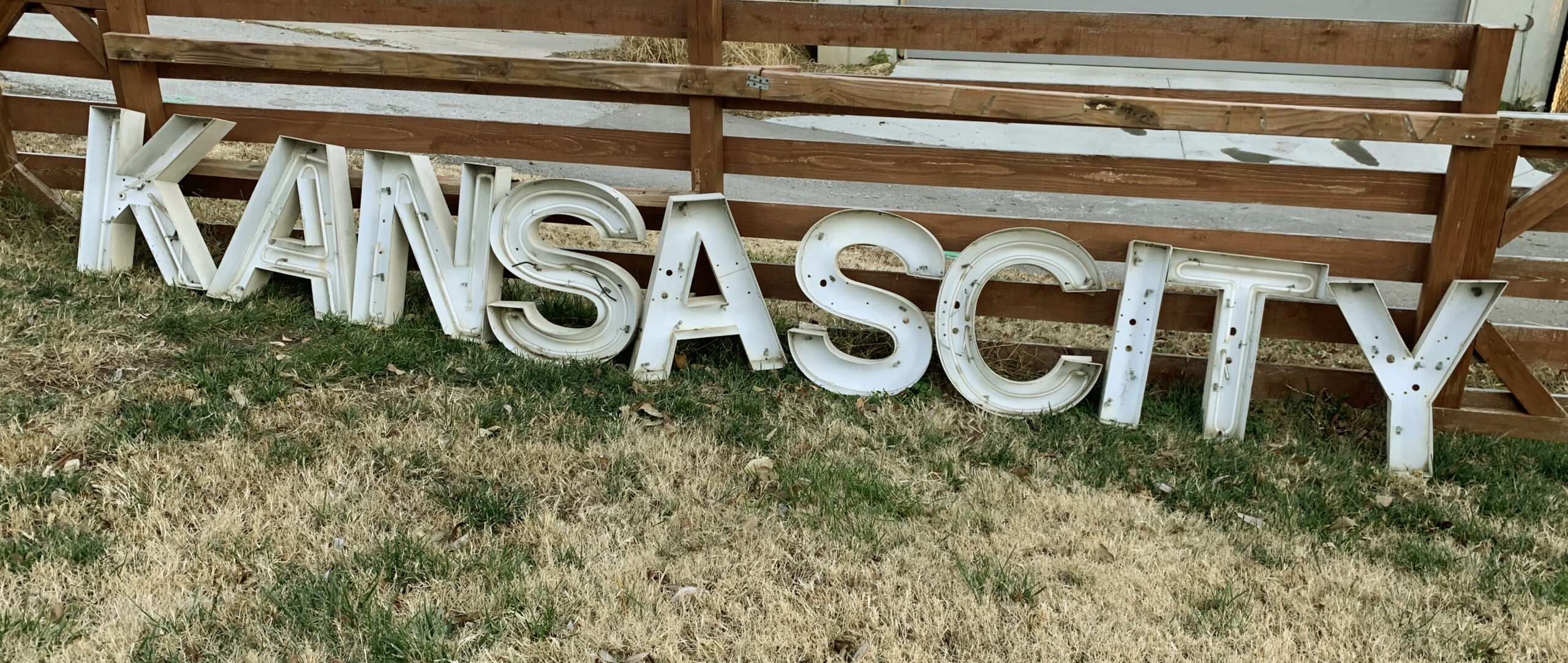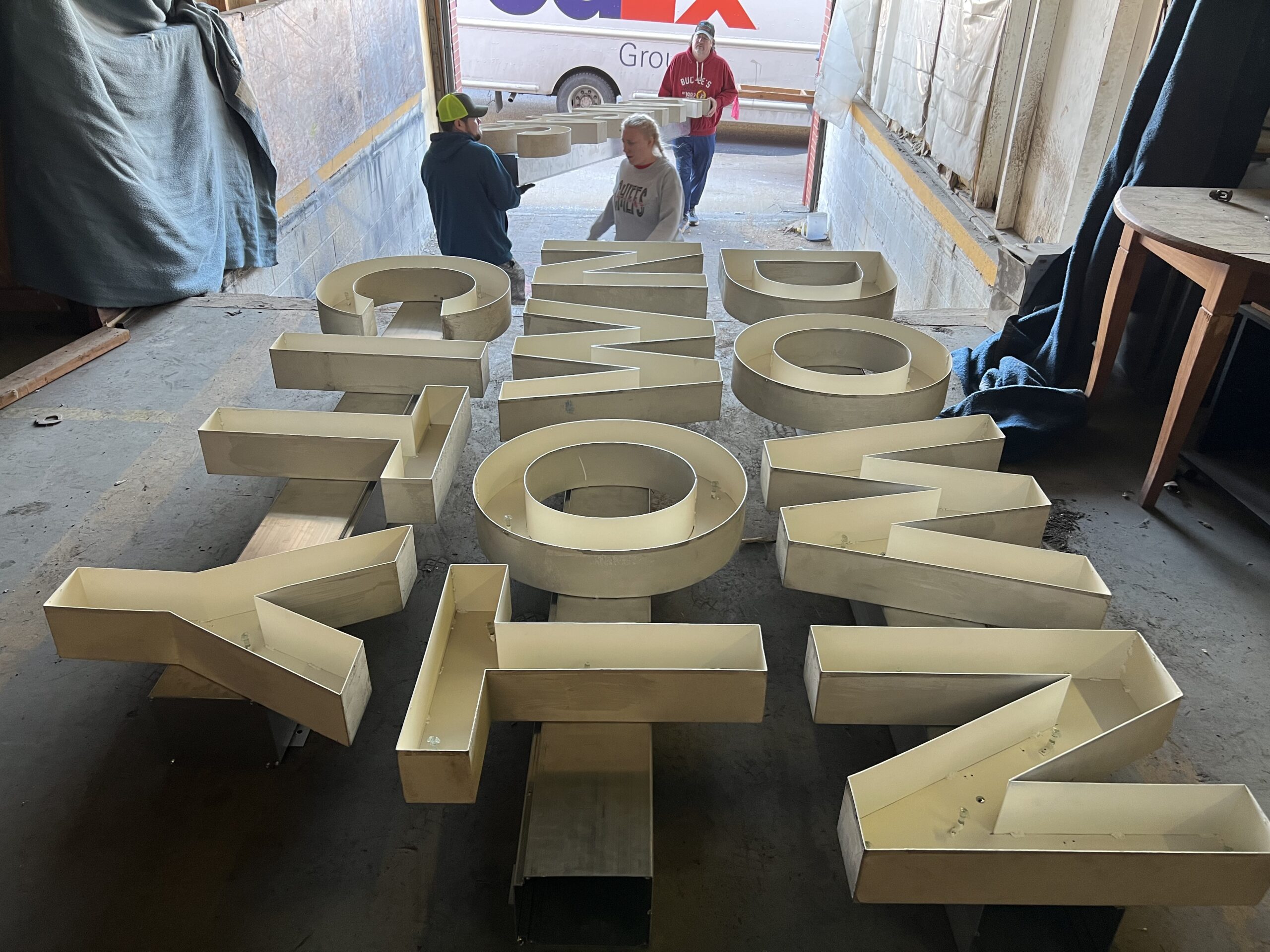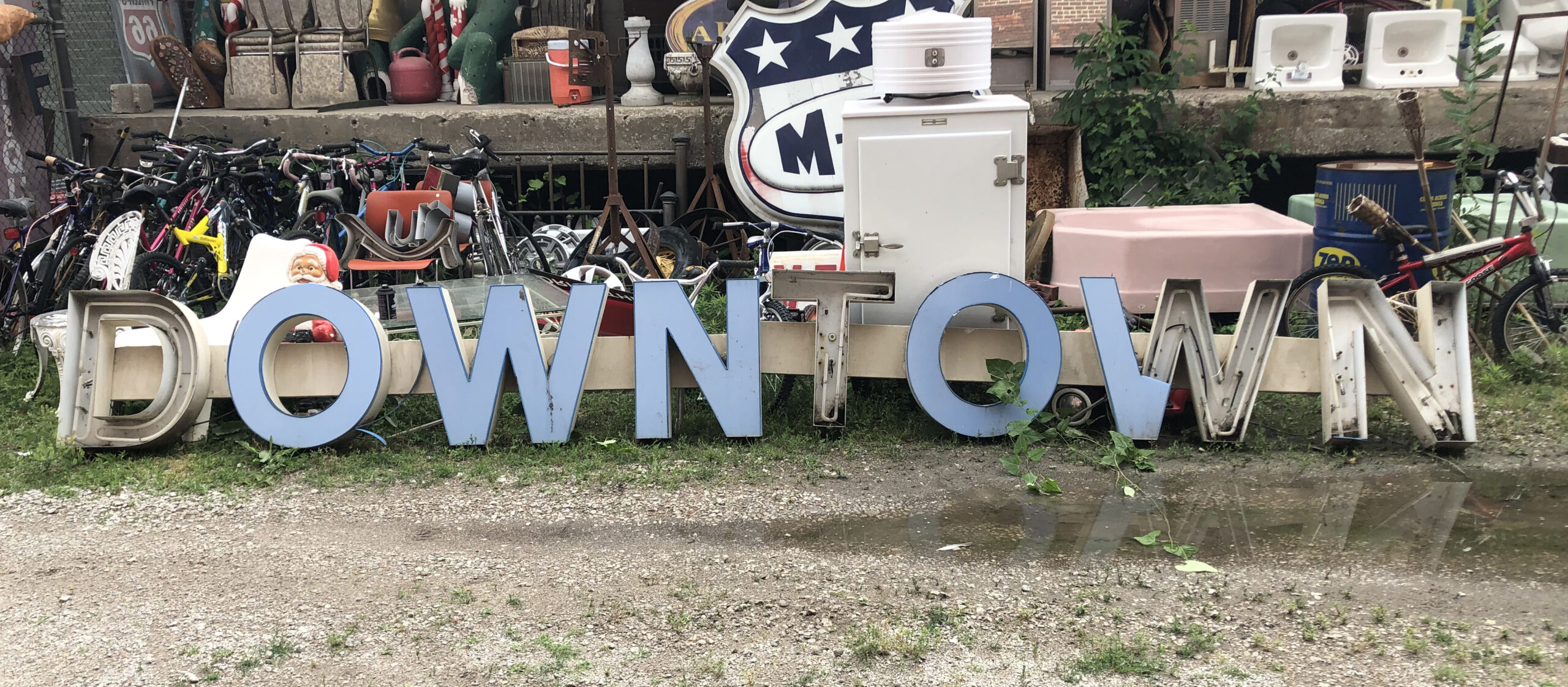Kansas City and Downtown Airport signs
Kansas City and Downtown Airport signs
First called New Richards Field (named after John Francisco Richards II, a Kansas City airman killed in World War I), Kansas City’s downtown airport was dedicated on August 17, 1927. City officials, anxious to promote the future of passenger air travel, flew into the soggy field known locally as Peninsula Field (it is practically surrounded by the Missouri River) from the original Richards Field in Raytown, Missouri. Special guest Charles Lindbergh joined the festivities and 25,000 enthusiastic attendees, landing his Spirit of St. Louis airplane a mere three months after his famous solo non-stop transatlantic flight. Kansas City Municipal Airport became its official name soon after the dedication.
City Manager Henry F. McElroy, once-skeptical of flying, and visionary Chamber of Commerce President Lou Holland were instrumental in the airport’s establishment in the Missouri River bottoms next to the Hannibal rail bridge, as air travel was considered to be handled in conjunction with rail traffic at that time. Kansas City “Boss” Tom Pendergast’s Ready Mixed Concrete Company eagerly supplied the concrete for the runways.
One of the airport’s most famous tenants was Transcontinental & Western Air (later changed to Trans World Airlines, a.k.a. TWA). Howard Hughes, TWA owner for 27 years, was said to have an office inside the airline’s headquarters on Richards Road.
Noting increased air traffic, larger jet planes, little room for expansion, and the need to “clear” downtown and Quality Hill skyscrapers during takeoff, an FAA memo in the early 1960s called Kansas City Municipal “the most dangerous major airport in the country,” recommending no federal funds be spent to support it.
Consequently, a brand new Kansas City International airport opened to commercial air travel in 1972 at the existing Mid-Continent International location (thus, our MCI airport code) as Kansas City Municipal continued serving private aviation and chartered carriers. In 1977, the older airport was renamed the Kansas City Downtown Airport and in 2002, the Charles B. Wheeler Downtown Airport, acknowledging former Mayor Wheeler’s significant contributions to the development of KCI.
Incidentally, Air Force One, once a behemoth Boeing 747, routinely landed safely at the downtown airport for presidential visits.
One fun story: On January 12, 1970, following their Super Bowl IV victory over the Minnesota Vikings in New Orleans, the returning Kansas City Chiefs’ charter flight was diverted to the then-unfinished KCI due to a “runway incursion” by Chiefs fans hoping to greet their champion Chiefs upon landing at the downtown airport.
Historical content: https://en.wikipedia.org/wiki/Talk:Charles_B._Wheeler_Downtown_Airport and https://kchistory.org/week-kansas-city-history/aviation-takes
First called New Richards Field (named after John Francisco Richards II, a Kansas City airman killed in World War I), Kansas City’s downtown airport was dedicated on August 17, 1927. City officials, anxious to promote the future of passenger air travel, flew into the soggy field known locally as Peninsula Field (it is practically surrounded by the Missouri River) from the original Richards Field in Raytown, Missouri. Special guest Charles Lindbergh joined the festivities and 25,000 enthusiastic attendees, landing his Spirit of St. Louis airplane a mere three months after his famous solo non-stop transatlantic flight. Kansas City Municipal Airport became its official name soon after the dedication.
City Manager Henry F. McElroy, once-skeptical of flying, and visionary Chamber of Commerce President Lou Holland were instrumental in the airport’s establishment in the Missouri River bottoms next to the Hannibal rail bridge, as air travel was considered to be handled in conjunction with rail traffic at that time. Kansas City “Boss” Tom Pendergast’s Ready Mixed Concrete Company eagerly supplied the concrete for the runways.
One of the airport’s most famous tenants was Transcontinental & Western Air (later changed to Trans World Airlines, a.k.a. TWA). Howard Hughes, TWA owner for 27 years, was said to have an office inside the airline’s headquarters on Richards Road.
Noting increased air traffic, larger jet planes, little room for expansion, and the need to “clear” downtown and Quality Hill skyscrapers during takeoff, an FAA memo in the early 1960s called Kansas City Municipal “the most dangerous major airport in the country,” recommending no federal funds be spent to support it.
Consequently, a brand new Kansas City International airport opened to commercial air travel in 1972 at the existing Mid-Continent International location (thus, our MCI airport code) as Kansas City Municipal continued serving private aviation and chartered carriers. In 1977, the older airport was renamed the Kansas City Downtown Airport and in 2002, the Charles B. Wheeler Downtown Airport, acknowledging former Mayor Wheeler’s significant contributions to the development of KCI.
Incidentally, Air Force One, once a behemoth Boeing 747, routinely landed safely at the downtown airport for presidential visits.
One fun story: On January 12, 1970, following their Super Bowl IV victory over the Minnesota Vikings in New Orleans, the returning Kansas City Chiefs’ charter flight was diverted to the then-unfinished KCI due to a “runway incursion” by Chiefs fans hoping to greet their champion Chiefs upon landing at the downtown airport.
Historical content: https://en.wikipedia.org/wiki/Talk:Charles_B._Wheeler_Downtown_Airport and https://kchistory.org/week-kansas-city-history/aviation-takes




